Rievaulx Abbey
OS grid reference:- SE 578 848
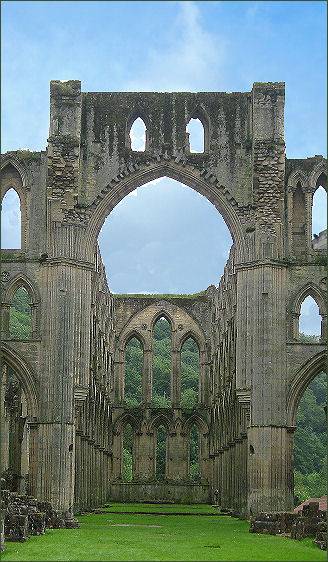
Atmospheric Rievaulx Abbey is situated in an isolated valley near the pretty market town of Helmsley on the edge of the North York Moors National Park.
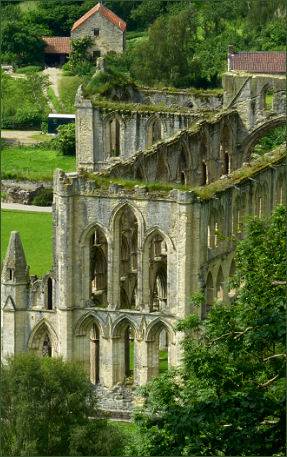 Rievaulx was once one of the richest abbeys in England. Rievaulx Abbey was founded in 1132 by twelve monks from Clairvaux Abbey sent by St Bernard of Clairvaux (1090 - 20 August 1153), a French abbot and the primary reformer for the Cistercian order, as a mission for the colonisation of the north of England and Scotland. It was the first Cistercian abbey to be established in the north of England. With time it became one of the great Cistercian abbeys of Yorkshire, second only to Fountains Abbey in fame.
Rievaulx was once one of the richest abbeys in England. Rievaulx Abbey was founded in 1132 by twelve monks from Clairvaux Abbey sent by St Bernard of Clairvaux (1090 - 20 August 1153), a French abbot and the primary reformer for the Cistercian order, as a mission for the colonisation of the north of England and Scotland. It was the first Cistercian abbey to be established in the north of England. With time it became one of the great Cistercian abbeys of Yorkshire, second only to Fountains Abbey in fame.
The Cistercians had first appeared in England at Waverley, in Surrey, in 1128. Rievaulx was established in March 1132 on land given by Walter Espec, lord of nearby Helmsley and a royal justiciar, who was an active supporter of ecclesiastical reform.
The first buildings to be constructed at Rievaulx were temporary timber structures, the construction of the first stone buildings commenced under the guidance of the first abbot, William (1132-1145), after 1135. William planned that Rievaulx was to have the same layout as that of its mother abbey of the order at Citeaux, in France, which had a large church, with a cloister range to the south.
The name Rievaulx is of Norman origin and is a corruption of Rye Vallis, or Rye Valley. The abbey's remote location in a wooded dale on the River Wye, suited the Cistercians, whose desire was to follow a strict life of prayer and self-sufficiency with little contact with the outside world. It attracted high-profile benefactors such as King Henry II of England (1135-1154) and King David I of Scotland (1124-1153).
Rievaulx's most famous abbot, Aelred (1110-1167), a Northumbrian, who was one of the three sons of Eilaf, a priest of St Andrew's at Hexham. Aelred or Etyhelred, as he is sometimes known, had been a steward in King David of Scotland's household at Roxburgh. He came to Rievaulx as a postulant in 1134, and rose quickly among the ranks. Alongside his role as a monk, Aelred was involved throughout his life in political affairs. In 1138, when Rievaulx's patron, Walter Espec, was to surrender his castle at Wark to King David of Scotland, Aelred accompanied Abbot William of Rievaulx to the Scottish border to negotiate the transfer. He was elected as abbot of Rievaulx in 1147, Aelred enjoyed a reputation as a brilliant writer and England's most revered biblical scholar becoming known as the "St. Bernard of the North." He rebuilt the church on a grand scale.
In 1142 he travelled to Rome, alongside Walter of London, Archdeacon of York, to represent before Pope Innocent II a group of northern prelates who opposed the election of King Stephen's nephew William as archbishop of York. Under Aelred's administration, the abbey is said to have grown to some 140 monks and 500 conversi and laymen. Aelred died in the winter of 1166-7, at Rievaulx. The east end of the church was later demolished and enlarged by Abbot Roger II (1223-1239).
Rievaulx Abbey prospered to become one of the greatest and wealthiest abbeys in England, housing a 650-strong community at its peak. However, the abbey had to face a number of problems including debt, war, famine and cattle diseases. Towards the end of the thirteenth century the abbey had incurred debts on its building projects and lost revenue due to an epidemic of sheep scab. This ill fortune was compounded by raiders from Scotland in the early fourteenth century. The onset of the bubonic plague, more commonly known as the Black Death in the mid fourteenth century rendered it difficult to recruit new lay brothers for manual labour.
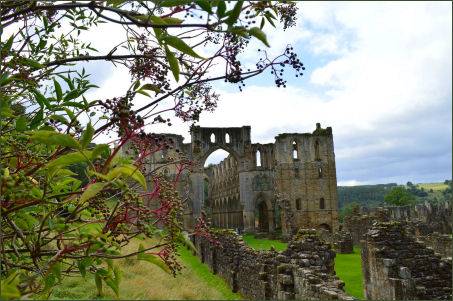
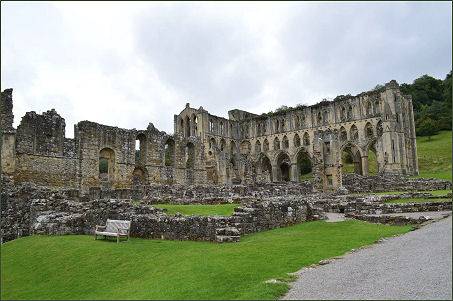
By 1381 there were only fourteen choir monks, three lay brothers and the abbot left at Rievaulx, and some buildings were reduced in size. By the fifteenth century the Cistercian practices of strict observance according Saint Benedict's rule had been abandoned in favour of a more comfortable lifestyle. The monks were permitted to eat meat and more private living accommodation was created for them, and the abbot had a substantial private household.
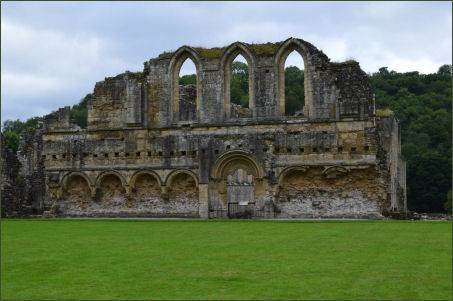
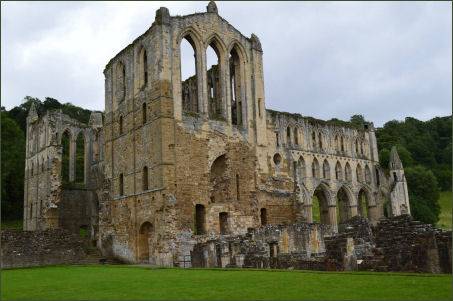
The abbey was dissolved by King Henry VIII on on 3 December 1538. Henry ordered the buildings to be rendered uninhabitable and stripped of valuables such as lead. The site was sold to Thomas Manners, Earl of Rutland, one of Henry's advisers, who extended the iron forge at Rievaulx Abbey, Manners employed the former iron master of the abbey and built up a profitable business, using the undercroft to store the charcoal used in heating the iron ore. The business continued to propsper until 1640. The abbey eventually passed to the Duncombe family.
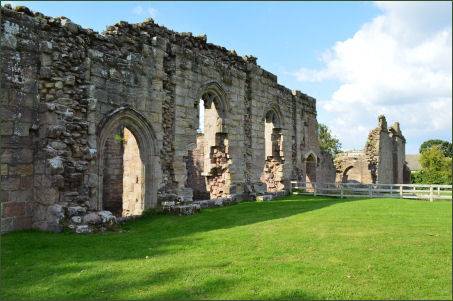
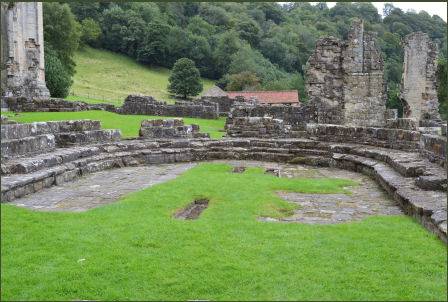
The abbey ruins are now owned by English Heritage. In the indoor interactive museum, visitors can learn more about the lives of the monks in medieval times. On the hill above the abbey is Rievaulx Terrace, a neo-classical pleasure garden created in 1758 by Thomas Duncombe, the owner of Duncombe Park . The terrace provides superb views over the abbey.
Images courtesy of Paul Johnson
Directions
In Rievaulx; 2 1/4 miles N of Helmsley, on minor road off B1257.
Sat Nav -Postcode: YO62 5LB Latitude: 54.256867 Longitude: -1.118284
Parking -Limited pay and display parking available on site, refundable to EH members and paying visitors on purchase of admission ticket. Throughout May half term (Saturday 28 May - Sunday 5 June 2016) a minibus service will operate from Helmsley Castle car park between 10am and 4pm, every half an hour.
Abbeys and Churches of Yorkshire
